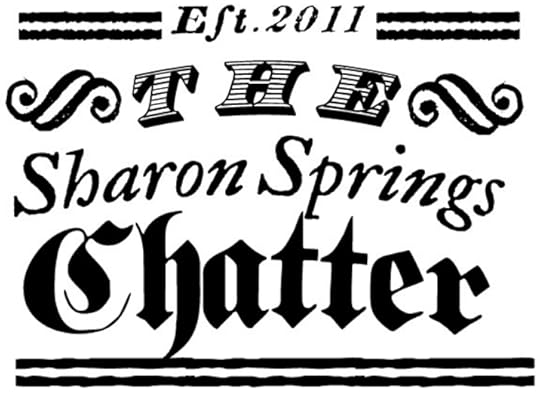Josh Kilmer-Purcell's Blog, page 19
July 14, 2017
The Price of Fame was $1.49 at the 1980 Wisconsin State Fair
Josh is the author of two bestselling memoirs, I Am Not Myself These Days, and The Bucolic Plague. From time to time, he shares new stories…

At the 1980 Wisconsin State Fair, I was honored by being chosen for the cover of Time Magazine.
Being only 11 years old, you can imagine my surprise at being selected not only for a cover, but for the very prestigious “Man of the Year” issue.
Naturally, I accepted their offer, and obediently sat for my portrait. As they adjusted a bright green background behind me, (how did they know my favorite color?…good journalism, that’s how!) I reflected on the many accomplishments that brought me to this moment…the “What Wisconsin Means to Me” statewide essay contest in which I placed Honorable Mention; my well received turn as Pappy Yokum in the Oconomowoc Junior High School run of “Little Abner;” the map I drew that included all of Oconomowoc’s historic buildings which hung for the entire month of June in the Municipal Library lobby.
It was humbling. Perhaps too humbling. I was young, and there was so, so much more I wanted to accomplish with my life.
So after the photographer and his assistant took their shot, I regretfully informed them that I would not be giving any photo approvals that day. “In fact,” I said, “I cannot accept this cover award at all.”
“You sure?” the assistant said. His dejection was as palpable as the gum he was smacking.
“Quite.”
“Well, if you change your mind, you can pick up your copy at the Main Gate anytime after 4pm.”
“I can assure you, I won’t.”
And with that, I turned towards the sun setting over the Swine Barn, and marched my way down the “Street of Wisconsin Yesterday” into my very bright future.
“Hey kid! I can put you on “Rolling Stone” instead!” the photographer shouted after me.
“Thank you, but no!” I shouted back. 2nd Chair bassoon was impressive. But hardly cover-worthy. “Try Barbara Mandrell on the Main Stage at 7:30! Good luck to you, sir!”
“Luck to you too!” he shouted back. Or something to that effect. It was hard to make out over the crowd.
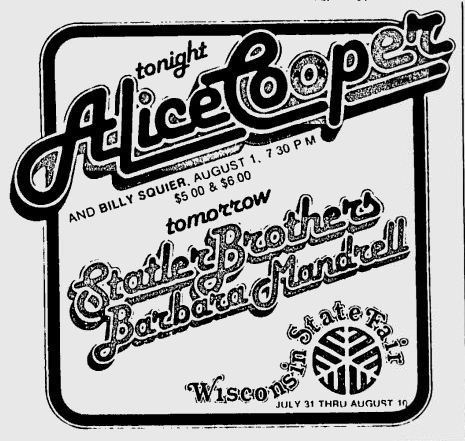




July 3, 2017
Our Favorite Pics of Summer 2017 (So Far…)
There’s not a day that goes by during summer when we don’t think: “Thank you, William Beekman, for picking this spot for your farm.” (We’ll be honest…that’s not always the case during the brutal winter months.)
We always carry our phones with us while we’re doing chores so we never miss a picture perfect moment. Of course it’s impossible to capture all of the beauty in photos…but here’s our best shot(s):



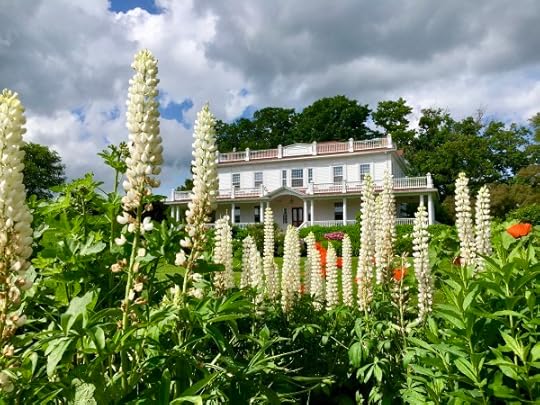
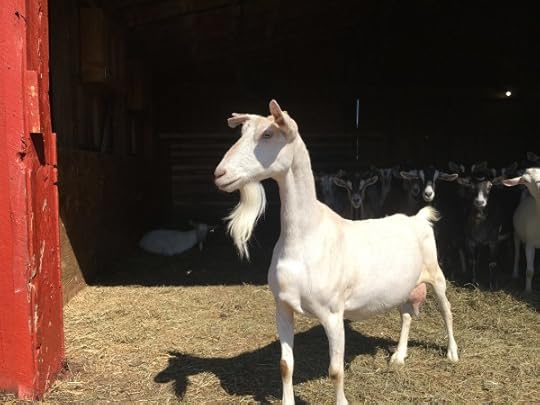
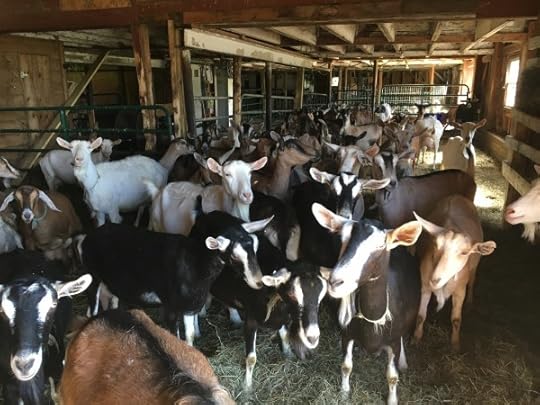
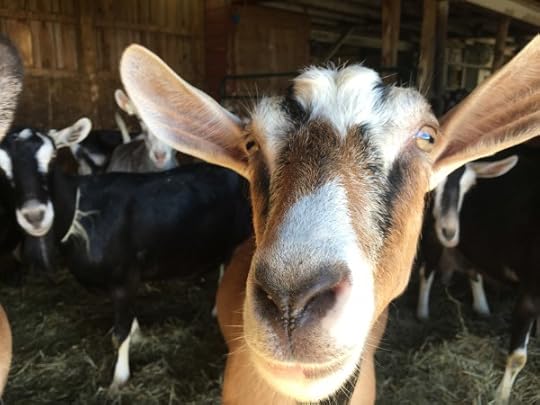

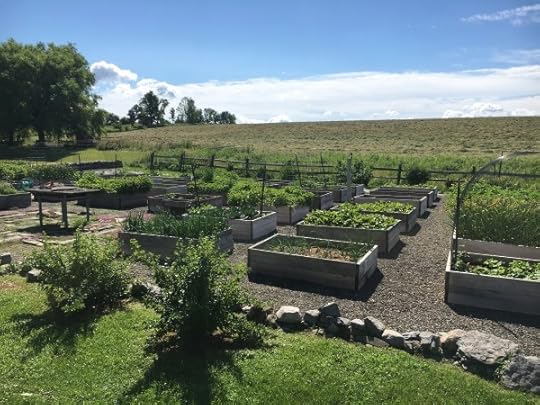
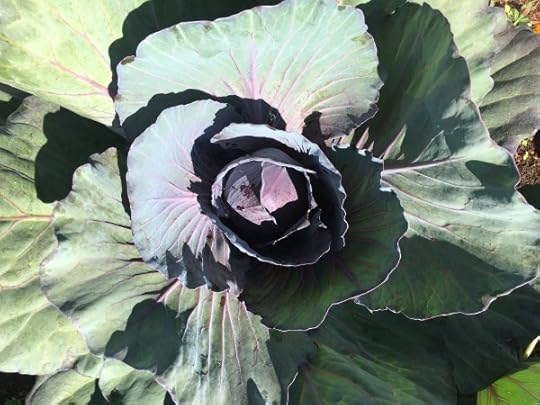




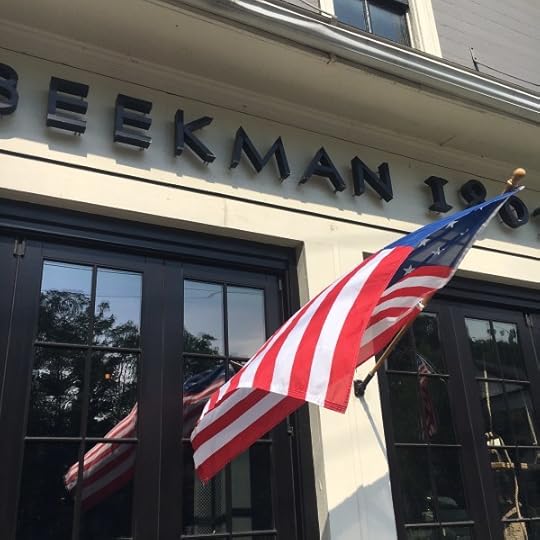
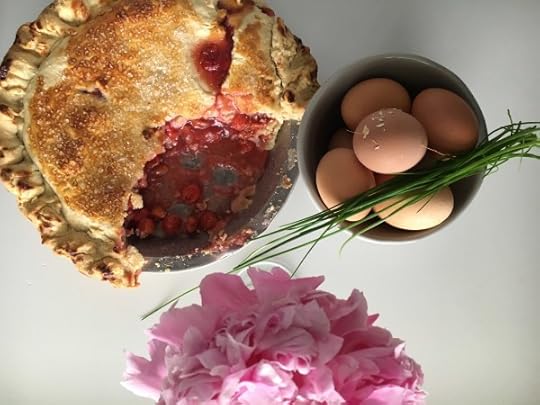

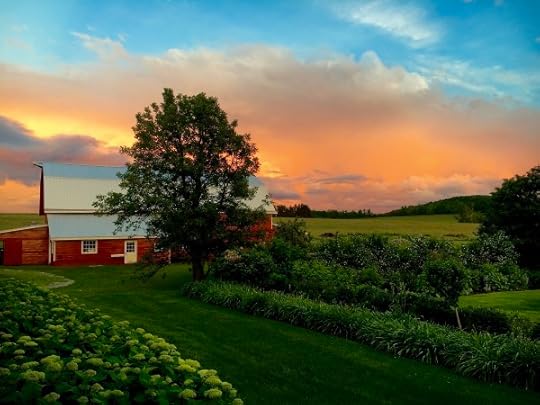



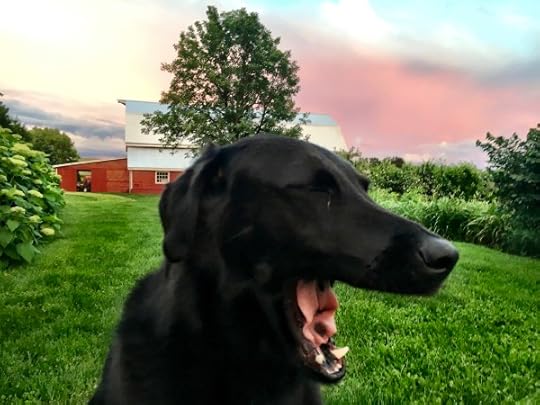



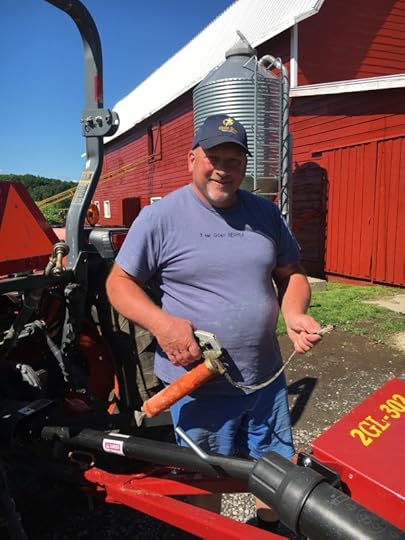
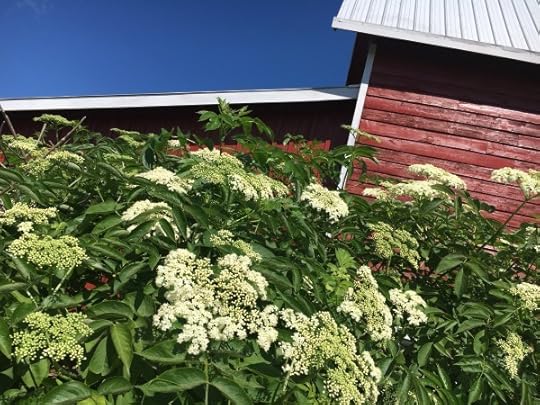
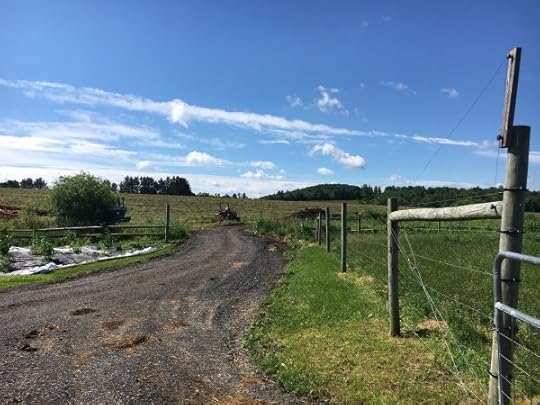

<
>
June 30, 2017
WEEKEND PROJECT: GARDENING WITH BUILDING BLOCKS
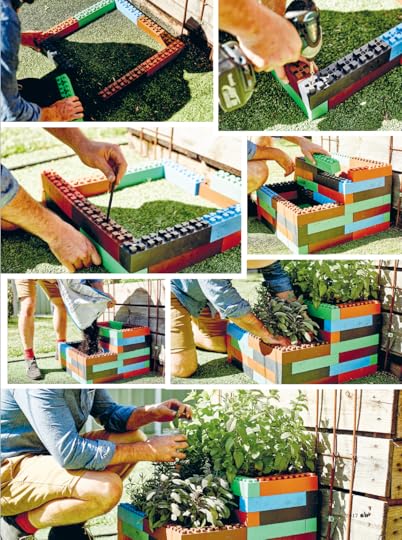
Lego can be credited for developing the creative minds of our modern-day engineers, so what better way to develop the minds of landscapers than by using Togetherfarm building blocks to build your own garden bed?
MATERIALS
Togetherfarm blocks
Some form of imagination
50 x 75 mm (3 in) screws
Drill set
4 mm irrigation tubing (if irrigating by automatic timer)
Premium potting mix
Seedlings
INSTRUCTIONS
1. Like a pig in … Mat with his building blocks and inner child about to be released! If working on a hard surface, it’s a good idea to have some drainage underneath for the water to escape. Otherwise, you will have to deal with some water overflow. Really, it’s not a huge deal, just worth mentioning.
2. Start creating … Do we really need to explain how to use Lego?!
3. One nice design feature of these blocks is that they have screw threads that allow you to secure your creation so that bigger kids can’t come over and thieve or knock it over. So, as you construct each level, pop in a screw to hold it together. It also keeps things sturdy, and that helps in the building process.
4. Rather than having irrigation lines buried in underneath and through the soil, or placed over the top of the blocks, there is a hole that runs through each join that allows 4 mm poly tubing to fit through. It is best to run this tubing through as you build, rather than at the end.
5. When time, money and the killjoys say enough is enough, it’s almost tools down and the necessary moment to admire your work, bring in the family – keeping the little kids away – and behold the wonder!
6. Now, fill with premium potting mix, ready for planting.
7. Plant a selection of seasonal vegetables and herbs. With your building block garden so wondrous and colorful, even weeds would look great in this.
We, however, prefer varieties that are more palatable.
Finding the adventure in growing food is exactly what edible gardening is for us, and activities like this not only revitalize our relationship with the patch but help pull in those still sitting outside the veggie patch circle. More than that, they continue to change the perception that people who grow food need to have a beard and jump in excitement at the sight of good mulch.
Together farm blocks are made from 100% recycled and recyclable, UV-protected plastic. This is not a sales pitch – there’s just no hiding that this is a quality, ethically made product. Before you plan some extended leave to conquer this activity, we should warn you that these blocks can only be purchased from the USA. There is some cost, and length of time, you will need to endure to get your hands on the bricks and mortar, so plan your life accordingly.
______________________________________
As featured in the Spring issue of Beekman 1802 Almanac Magazine. For more check out THE LITTLE VEGGIE PATCH CO. DIY GARDEN PROJECTS by Mat Pember and Dillon Seitchik-Reardon, published by Hardie Grant
June 27, 2017
The Gift of the Fourth Year
Every time
I bared my soul
You were there to buckle me in
Every time
I needed to get something off my chest
You gave me a place to write it down
Every time
I walked a mile in someone else’s shoes
You made sure that I went the distance
Every time
I carried a weight on my shoulders
You took some of the load
And every time
I look down at my wrist
And feel your grip
I will remind myself that there is not enough time
There will never be enough time
The gift of the fourth year is leather
Each year I write a poem to commemorate our wedding anniversary using the traditional anniversary gift as the inspiration.
Save
Save
Save
June 23, 2017
Weekend project: FLOATING PRESSED BOTANICALS
 Framed in black tape and frozen in time under glass, these arrangements of dried, pressed flowers and foliage are a two-dimensional reinterpretation of classic scientific specimen boxes.
Framed in black tape and frozen in time under glass, these arrangements of dried, pressed flowers and foliage are a two-dimensional reinterpretation of classic scientific specimen boxes.
Clear panes of glass showcase even the most intricate of silhouettes, seemingly suspended in midair. A random placement of the materials takes on an organic composition, while a strategic placement is more graphic. I like to display the finished pieces by composing a variety of frame sizes and plants layered in a group so you can see dimensional effect through the layers of glass. Presented this way, they look like works of art atop a dresser or sideboard, but you could also place them on a shallow shelf or rail.
MATERIALS
Fresh-cut specimens for pressing or pre-pressed botanicals
Paper towels (if pressing flowers)
Blank newsprint paper (if pressing flowers; available at art supply stores)
Large heavy books, phone books suggested (if pressing flowers)
Lint-free cloth
Window cleaner
Pairs of glass panes
Sobo craft glue
Brush for glue
1 inch gold-tone binder clips or ¾ in wide black friction tape (available at hardware stores)
Scissors (if using tape)
Spoon (if using tape)
ASSEMBLY
1. Press fresh-cut specimens yourself (or skip this step and use pre-pressed botanicals). Pick your flowers and leaves at their freshest and blot with paper towels to dry any moisture before pressing. Give some thought as to how the flower or foliage will look when flattened, then place the plants between two sheets of blank newsprint paper and insert the sandwiched specimens into the pages of a heavy book. Choose a book large enough to press the botanicals and one where you will not be upset if the page possibly gets a little wet during the pressing—a telephone book is ideal. Separate the pressings by at least 1∕8 in for best results. Weigh the book down with other heavy books and leave undisturbed a couple of weeks until the specimens have dried completely.
2. Use a lint-free cloth and window cleaner to clean glass panes on both sides before you begin your arrangement.
3. Select a pressed botanical to display. Create arrangements using multiples of a single plant type or a variety of plants in different frames to keep the look modern and create a graphic composition; mixed specimens in one frame can vary in thickness and might affect how the panes hold together. Analyze your dried specimens before making your final choice.
4. Position the specimens on one pane of glass as desired. Let the shape of the botanicals inspire you: experiment with random placement or more structured designs like a grid or wreath.
5. Once you have arranged the specimens, use a brush to apply a few very small dots of craft glue to secure the botanicals to one pane of glass. Let dry for about 2 hours.
6. Top with a second pane, then connect the two together with binder clips or friction tape. To use clips: Clip one binder clip at the top of the panes and one at the bottom. To use friction tape: Working on one side at a time, cut a piece to fit, adding about ¼ in/6 mm overlap at each corner. Center the tape on the edge of the panes and press into place over each side, folding the tape over itself at the corners. Use the back of a spoon to burnish the tape to adhere it completely and make a sharp finish around the edges.
CARE
Keep out of direct sunlight to minimize fading. Should you need to clean the glass once the project is finished, be careful not to get any moisture in-between the panes of glass. If you have used friction tape to connect the panes, do not get the tape wet.
______________________________________
As featured in the Spring issue of Beekman 1802 Almanac Magazine. For more check out BRING THE OUTDOORS IN by Shane Powers with Jennifer Cegielski, photographs by Gentl + Hyers (Chronicle Books, 2013).
June 20, 2017
Everyone Invited to the Table

When a group of concerned neighbors in Cooperstown, NY felt like the citizens of their town were becoming disconnected from one another, they did something about.
The “Growing Community” project began six years ago to demonstrate a love of community, cooking and eating, growing vegetables and sharing knowledge. Through planting, nurturing, harvesting, cooking, and sharing with friends, family, and strangers too, they grow a stronger community.
Each year, the group puts together a community potluck dinner that stretches down Main Street and brings out over 600 people to share in a wonderful communal dining experience.
We sat down with some of the Growing Community team to learn the recipe for success.
What have you learned over the past six years that have helped make this event a success?
Our guiding principles have always been simplicity and inclusion. We keep the table setup simple so that volunteers don’t burn out and participants feel relaxed and enjoy the fellowship. When deciding on a location we chose a section of street that was near a park. This helps manage crowd control and also gives children a place to play safely while their parents are chatting with newfound friends and neighbors. An added bonus is that there are public restrooms available. We set up one long table (using 40 8-ft tables) with gaps every few yards to facilitate crowd circulation.
We set up approximately 300 chairs, making sure there is room for wheelchairs and strollers (tables and chairs are fairly inexpensive to rent but you can also gather folding tables from local churches, schools, and civic organizations for free.)
We set a time frame for the event from 4:00pm to 7:00pm and the seats turn over a couple times. This helps with crowd control as families with young children can come in early and leave. Ending promptly at 7:00 also allows the set-up and break-down volunteers to schedule their time appropriately.
We use inexpensive but welcoming decorations (long rolls of butcher paper for the table runner, mason jars weighted with birdseed and candles, flowers from gardens and fields, crayons for kids and adults). Many of these items can be scavenged and reused year after year. They also make cleanup really easy.
The supper is free to all – which is essential to making all members of the community feel welcomed.
There are no agendas of any kind – no fundraising, no politicking, no campaigning, no tabling, no flyers. All are welcome, period. This is just to enjoy supper together as a community. This has been one of the reasons the event continues to grow each year. Everyone realizes that we can be united by our love of where we live.
This is truly a potluck event. BYOE (Bring Your Own Everything: a dish to pass, beverages, plates, cups, cutlery, napkins. We strongly encourage reusable dishes, etc. and aim for a zero waste event. Seeing everyone’s mismatched dishware on the table adds to the festivities, but we provide accessible receptacles for those who choose to bring paper and plastic.
We encourage, but do not require, that folks bring dishes made with local ingredients, if possible. If you don’t cook, no problem – bring a bowl of apples. If you don’t garden or shop at the farmers’ market, that’s okay too – bring your favorite dish. We just want everyone to share.
We provide festive live acoustic music–acoustic only so it doesn’t overwhelm conversations and no need to fuss with electricity.
How much does it cost to host the event and how do you raise the funds?
It costs about $700 to put on the event, and this money goes towards the rental of tables and chairs, printing posters, table decorations and music. This price can be reduced even further if you have community organizations that want to pool resources or barter.
We don’t want to be yet another group passing the hat. So to raise funds, we start veggie seedlings in the spring to sell, and other gardeners divide their flower bulbs to sell. Occasionally someone will make an unsolicited donation to us for the supper.
For readers who may want to replicate this idea in their own communities what have been some of the obstacles you have overcome and what logistical problems have you encountered and resolved over the years that they can learn from?
We really haven’t had any challenges besides wondering what the weather will bring us each year! We have been fortunate to have an enthusiastic village government for permits (important to follow the rules!) and cooperation, and an enthusiastic community who readily volunteer.
The biggest challenge initially was figuring out how to set everything up so that the crowd could flow, and what to do in case of rain. We’ve found that the event naturally encourages so much community good will that even small inconveniences are overlooked in honor of the greater good of the event.
To learn more about how YOU can cultivate a better life, subscribe to the Beekman 1802 Almanac, click here
June 18, 2017
How to Be a BeekMan
William Beekman, the namesake of the farm and Mercantile, was orphaned at sea, a child soldier in the Revolutionary War, and a businessman who grew his business with such integrity that he rose from humble beginnings to be the first judge of Schoharie County and a Senator—all without any formal education.
Surely he had some flaws that history has erased, but his story seems like a good foundation for creating a new breed of person: not just a handy man, not just an every man, not even just a noble man.
Here are the first ten tips for being a BeekMan:
Kindness is a gift that anyone can afford. Never show up empty handed.
A sense of humor is the best defense mechanism. If you can make a person laugh you can completely disarm them.
Be able to make something with your hands, but not have them show the toil.
If you want to be the boss, remember that a person who is appreciated will do more than what is expected.
The most expensive part of your wardrobe should be your shoes. If you want someone to walk a mile in yours, then you have to do the same. (That’s 2,000 steps in that little thingie you are wearing on your wrist.)
You can always tell the quality of a person by the types of things that bother them
Learn to read your own body language because everyone around you is very fluent in it
Manliness is not just about taking care of yourself, but of taking care of others.
The first one to get angry will always lose.
Your birthday suit should fit you better than anything else you own. Learn to take care of it.
Always go one step further than people expect you to
Look the part of a BeekMan with our shaving collection. Click here
Save
June 16, 2017
The Sharon Springs Chatter
We’ve lobbied really hard for Garrison Keillor to give up life in Lake Wobegone and move to Sharon Springs, but thus far he has not answered our letters or returned our calls.
Sharon Springs has beautiful people and above-average children, too, so on to Plan B.
What is a small town village without a small town paper to keep track of what everyone is doing?
Nancy Pfau, the town historian, is now editor of our own little paper.
Each month you can check back here for a new issue and follow the lives of the real village people. If you pay a real visit, you may even want to submit a story idea of your own!
You may not live in small town, but at least you can pretend.
See below for the Summer 2017 Issue
The Chatter for Summer 2017 by Carlos Stewart on Scribd
June 13, 2017
Can you make soup from a stone?
As the old folk story goes, hungry strangers convince the people of a town to each share a small amount of their food in order to make a meal that everyone enjoys. Thus the recipe for Stone Soup was born.
When we lost our jobs in the Recession of 2008 and decamped to a small farming community in upstate New York to start our lives over, we relied on the help of our neighbors to teach us virtually everything we needed to know to start a surprisingly complex “simple life”.
As our farm grew, so did our collection of artisans that make up Beekman 1802. So, too, did our little village of Sharon Springs NY, which is now on the verge of a major rebirth of its own.
Our upcoming fourth cookbook, A Seat at the Table, is our most personal one yet. Every recipe, every story, and every page is flavored with the seasoning and spice that only a diverse community can bring.
In a time of digitally-imposed isolation and unprecedented fractures in our national view of the American dream, what we need now more than ever is to find ways to lift everyone up; to find opportunities for everyone to succeed. We want to help pass the bread and not the buck.
In this spirit we want to invite everyone to have a seat at the table and encourage communities like yours to come together and make amazing things happen.
There are three ways we want to use our new book to encourage communities to come together and at the same time help civically minded organizations raise money to continue their efforts.
If you are a not-for-profit organization and wish to use the book as a fundraising opportunity we’ve created a special liaison that can help you purchase the book at wholesale (minimum order one case of books) so that you can then sell the book at whatever cost you would like to raise money for your organization. You can even take pre-orders for the book before you order so that your organization is not short any resources. If you order your books prior to the publication date (Sept 1), our publisher will also send you autographed bookplates for each book ordered. Contact: Olivia Wilson, Sales Manager, Wilson@hmhco.com (617) 351-5919
If your not-for-profit has an engaged social media following or a strong email list, you can also easily set up an Amazon affiliate link and encourage your followers to purchase the book this way. Your organization will get a percentage of each sale. You can sign up at any time, and it’s very simple. The link to sign up as an affiliate is here: https://affiliate-program.amazon.com/
If your organization is hosting an event of 500 people or more, Houghton Mifflin may send us (Brent and Josh)—to personally sign books at your event! (our schedule permitting!). For information, contact: Megan@slicepr.com
If you are an independent bookseller that would like to host a community potluck dinner and book signing with your customers, please contact your local HMH sales representative.
This autumn let’s invite as many people to the table as possible.
Save
Save
May 22, 2017
The Magic of In-between
Right or Wrong. Black or White. Republican or Democrat.
It seems like, more and more, we’re pressured to choose sides in our culture, communities & politics. Personally, I’ve often been accused of making too many compromises in my life. Of not whole-heartedly siding with one team or another. Condoning “grey areas” in one’s personal life is often seen as some sort of weakness.
But it only takes a single nature walk to learn that the most impressive discoveries are neither “here” nor “there.” They’re in the in-between. The boundaries between field and forest. Ocean and dunes. River and shore. Desert and rainforest. Pasture and wild.
Scientifically, these areas that mark the transition between two distinct ecosystems are called “ecotomes.” They can be broad – like a river delta. Or narrow – like an old stone wall between a meadow and woods.
These grey areas in nature aren’t “less than.” They’re “more than.” One interesting thing about almost all ecotomes is that they’re teeming with more bio-diversity than what lies on either side of it. You’ll find more (and more unique,) kinds of plant and animal life in and around a stone wall than you will in either the meadow or forest bordering either side.
I’d like to think the same holds true on a bigger scale. That consciously choosing to take “The Middle Way,” is a sign that one believes that there is more fertile ground in compromise than in absolutes. Maybe one day people will realize that choosing “either/or” is actually less courageous than putting your foot down firmly in the middle.
But don’t take my word for it. Let’s go for a spring walk along the back edge Beekman 1802 Farm – an ecotome between field and forest. Some of our most interesting and fleeting discoveries are found during walks in the springtime (another “in-between” dividing winter and summer.) Come along…



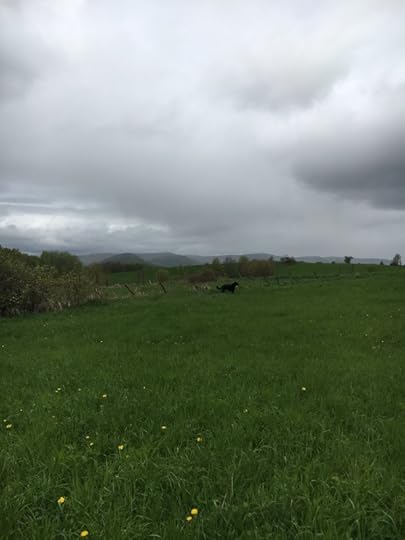
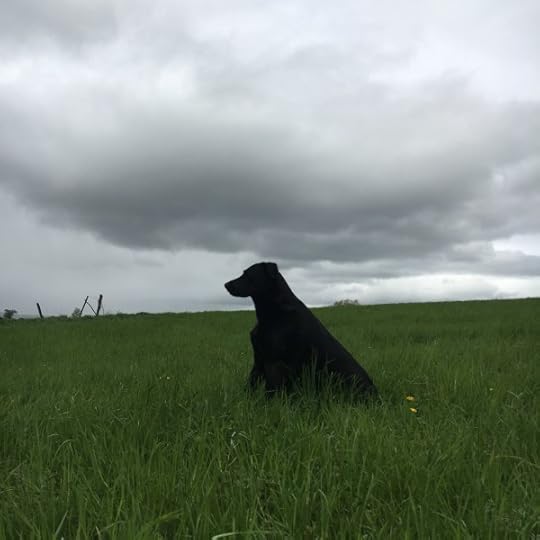





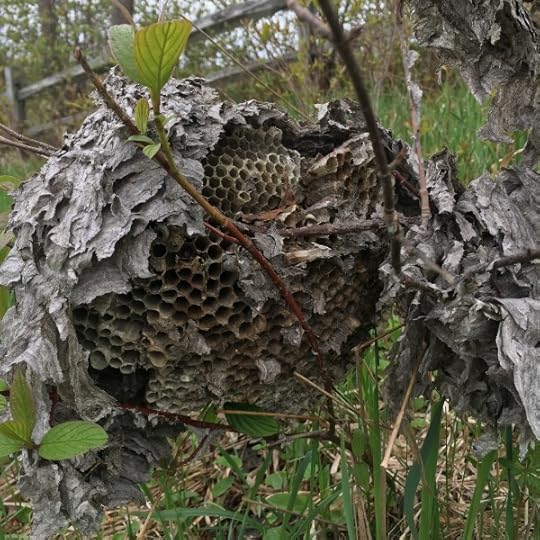



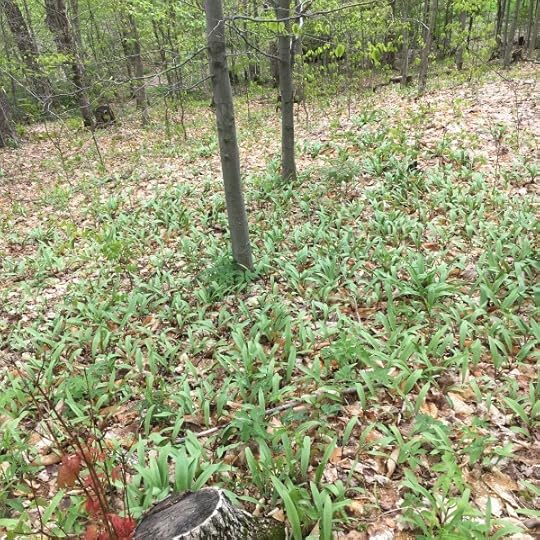
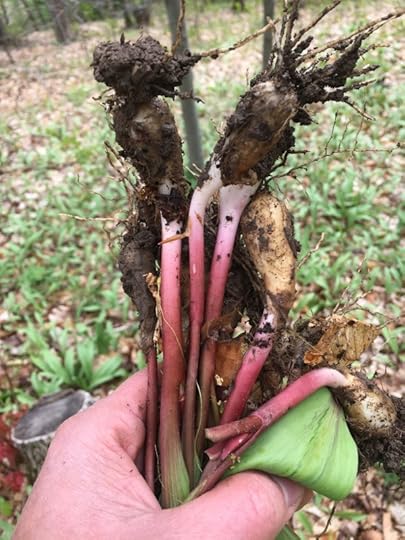
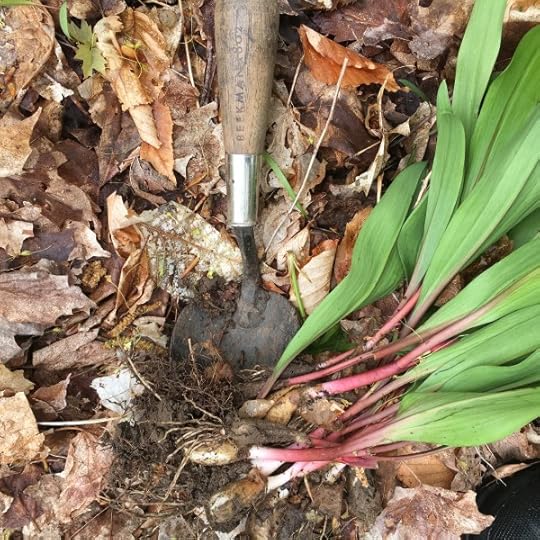

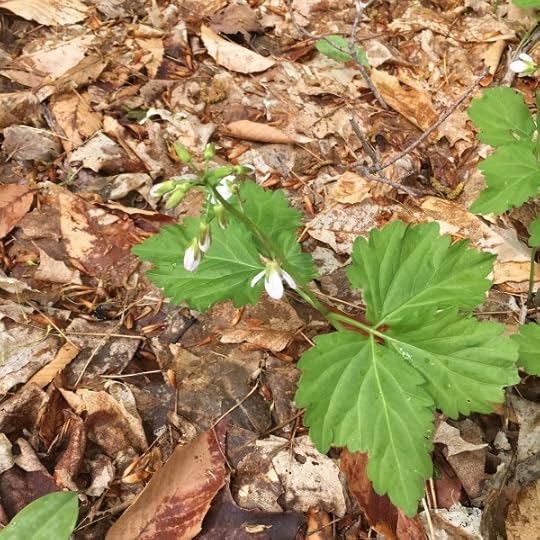

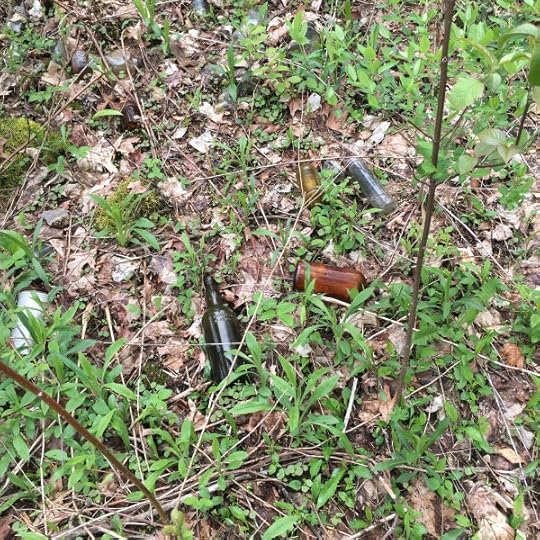

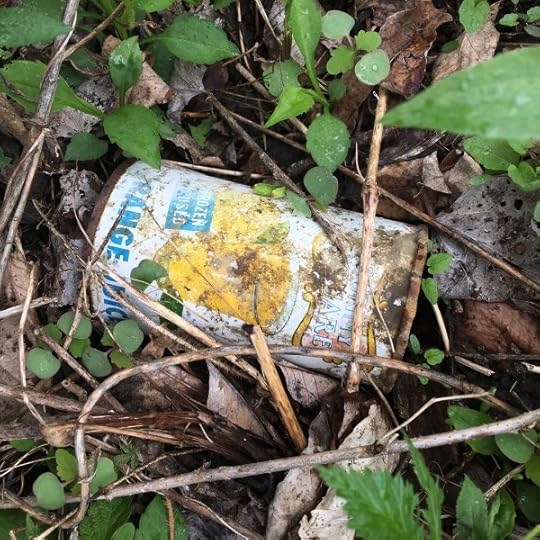
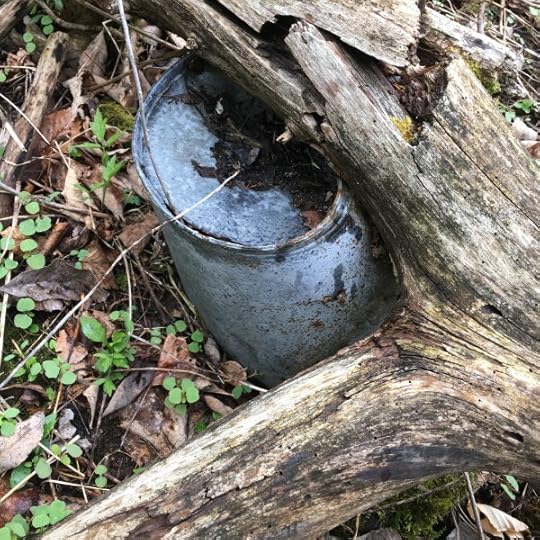

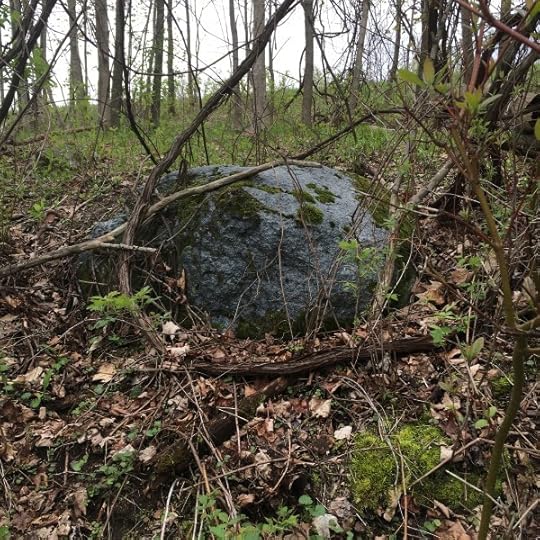

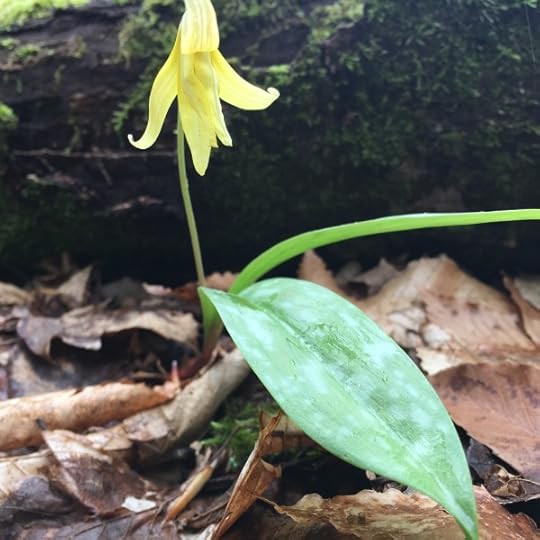
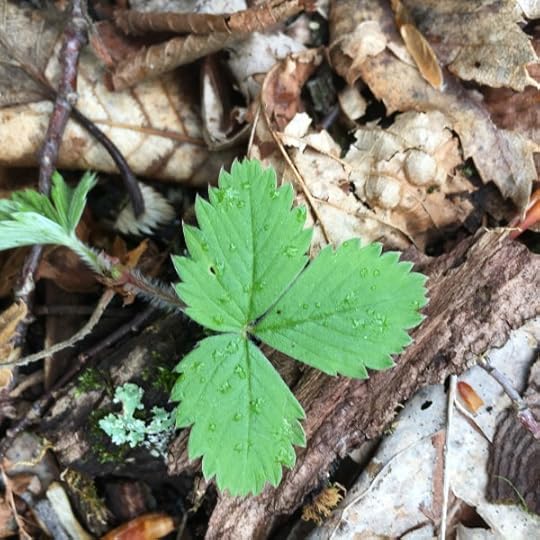

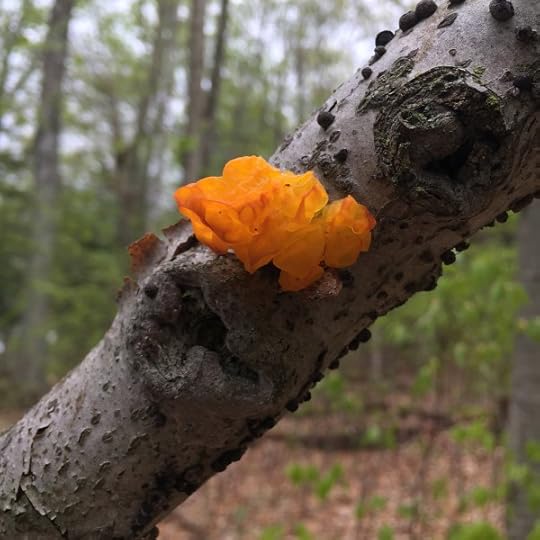

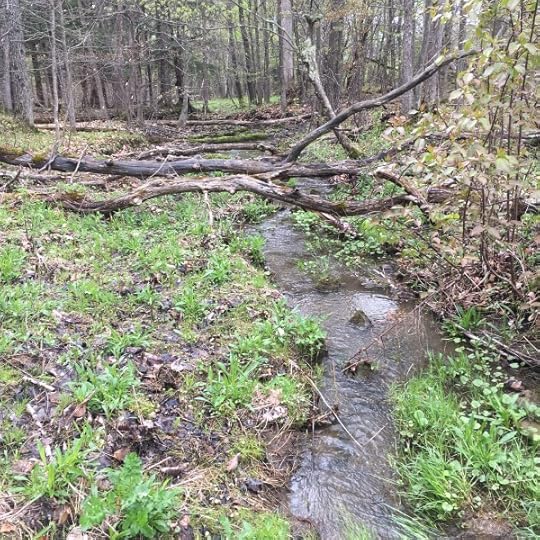
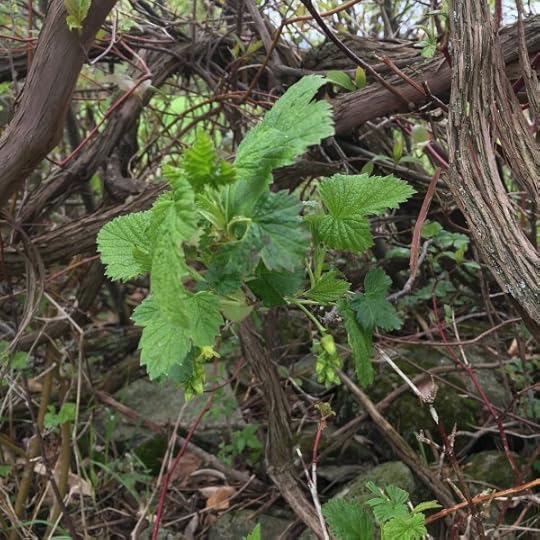
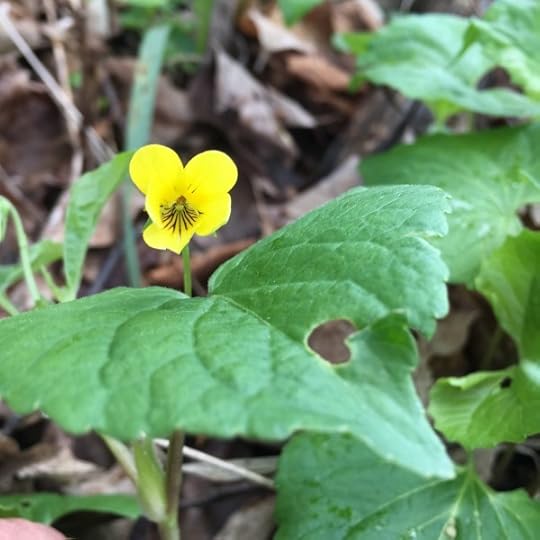

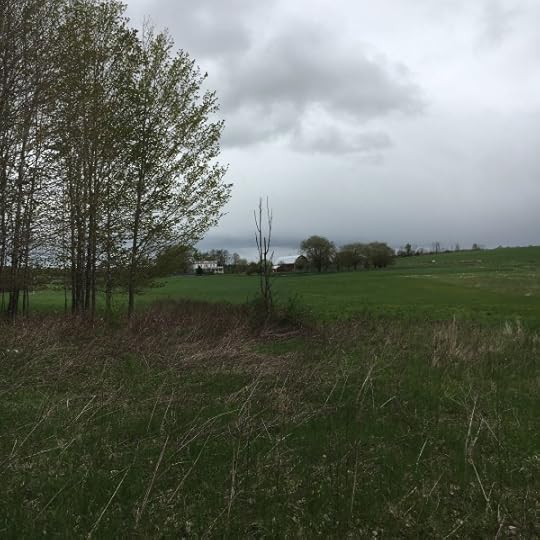

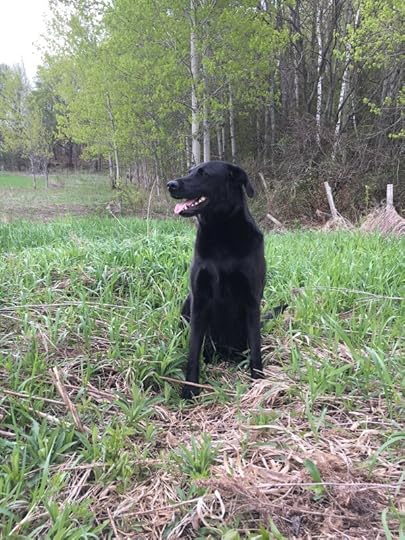



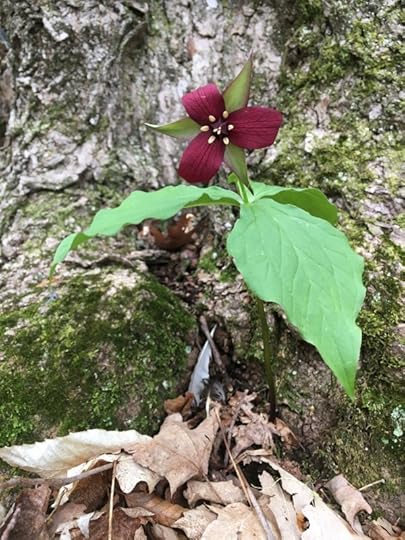
<
>



